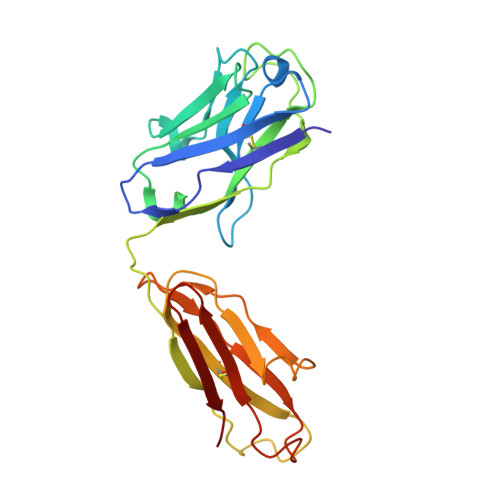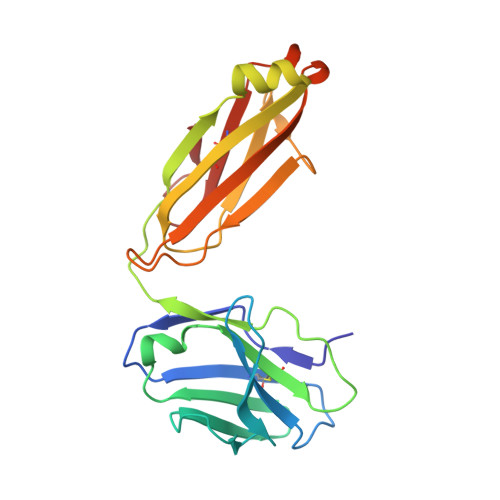Etesevimab in combination with JS026 neutralizing SARS-CoV-2 and its variants.
Wang, F., Li, L., Dou, Y., Shi, R., Duan, X., Liu, H., Zhang, J., Liu, D., Wu, J., He, Y., Lan, J., Lu, B., Feng, H., Yan, J.(2022) Emerg Microbes Infect 11: 548-551
- PubMed: 35060840
- DOI: https://doi.org/10.1080/22221751.2022.2032374
- Primary Citation of Related Structures:
7F7E - PubMed Abstract:
The neutralizing antibody is a potential therapeutic for the ongoing COVID-19 pandemic. As an antiviral agent, numerous mAbs recognize the epitopes that overlap with ACE2-binding sites in the SARS-CoV-2-RBD. Some studies have shown that residual changes on the spike protein can significantly decrease the efficiency of neutralizing antibodies. To address this issue, a therapeutic cocktail could be an effective countermeasure. In the present study, we isolated a fully human neutralizing antibody, JS026, from a convalescent patient. The comparative analysis revealed that JS026 binding to SARS-CoV-2-RBD mainly located between epitopes for class 2 and class 3 mAbs as opposed to that of class 1 (etesevimab) antibodies. A cocktail of etesevimab and JS026 increased neutralizing efficacy against both wild-type SARS-CoV-2 and the recent emergence of Alpha, Beta, Gamma, and Delta variants. JS026 and the cocktail reduced virus titers in the infected lungs of hACE2 transgenic mice and relieved pathological changes. These findings would benefit antibody-based therapeutic countermeasures in the treatment of COVID-19.
Organizational Affiliation:
CAS Key Laboratory of Pathogenic Microbiology and Immunology, Institute of Microbiology, Chinese Academy of Sciences, Beijing, People's Republic of China.

















